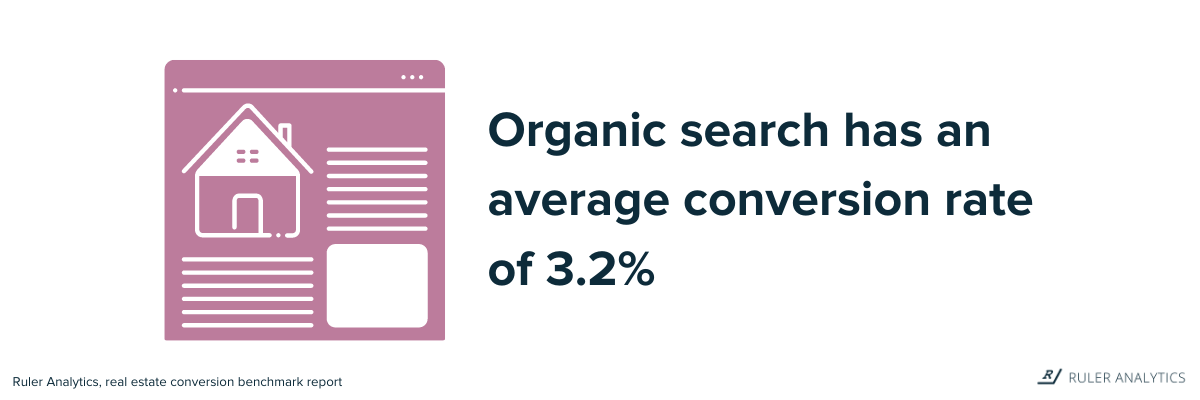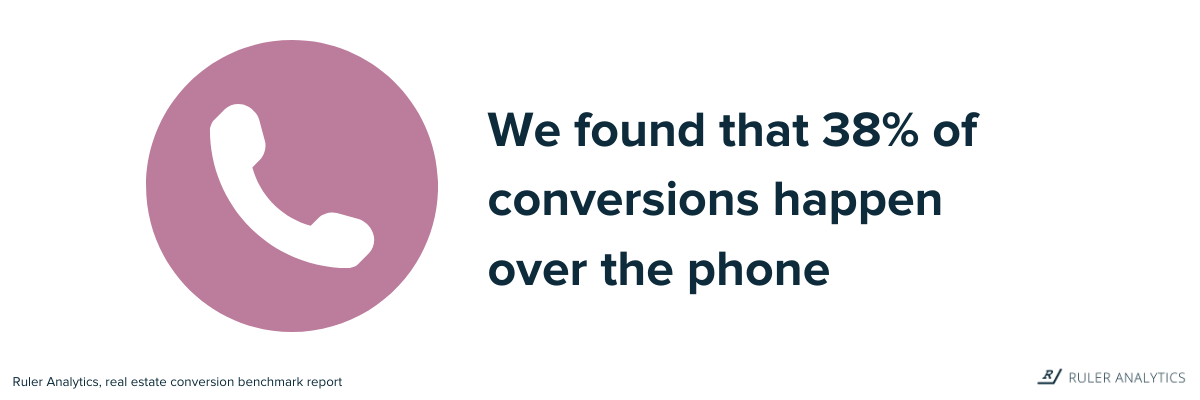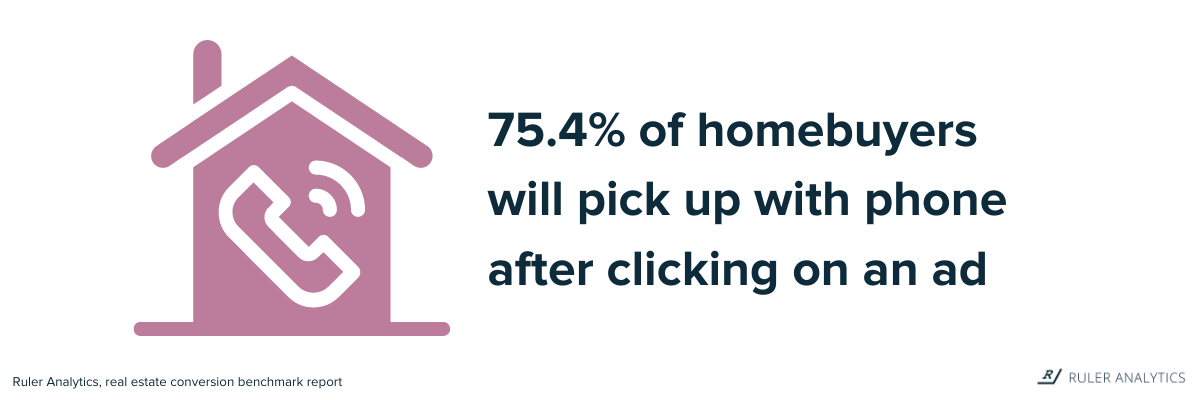These marketing statistics will help you understand what advertising tactics and channels are working for businesses like yours in the real estate industry.
The real estate industry has undergone an immense digital transformation over the last few years.
Gone are the days where your only option to find a new home was to pop into your local real estate agent.
Online research has become an increasingly important part of the consumer journey.
More homebuyers are searching for properties, comparing prices and taking virtual tours before reaching out for assistance.
Many real estate marketers have recognised the shift in consumer behaviours and are spending more money on digital marketing to connect and acquire the right type of leads.
As a supplier of marketing attribution software, we decided to gather a list of real estate marketing statistics to help you better understand the industry and stay ahead of the competition.
Let’s get started!
To help you get a sense of what is happening in the real estate industry, we sampled the Ruler Analytics global database, which has over 100 million data points, to distinguish the average conversion rate and other key insights.
Here’s what we found.
💡 Pro Tip
Haven’t got time to read the full blog? You can find all of these statistics and more in our conversion rate benchmark report for real estate. Get key insights about the real estate industry and boost the performance of your lead generation.
Download the real estate conversion rate benchmark report
1. Organic and paid search drive 57% of website visitors
Search marketing has allowed realtors to put themselves in front of people looking for a new home or property. Like any industry, the competition on Google is fierce. As such, real estate marketers have become laser-focused on local SEO to drive visitors to their physical locations while encouraging online leads. (Ruler Analytics)

2. Real estate has an overall average conversion rate of 4.7%, but top performers convert up to 12.0%
We discovered that average performers in the real estate industry turn 3.2% of visitors into qualified leads. (Source: Ruler Analytics)
3. Organic search has an average conversion rate of 3.2%
Real estate SEO is tough, but the rewards are well worth it. Out of all the marketing channels we analysed, organic search came out on top for having the highest conversion rate. (Source: Ruler Analytics)

4. Paid search has an average conversion rate of 1.5%
Paid search allows real estate marketers to attract the interest of homebuyers who are ready to enter the market with high intent keywords. Conversion rates vary depending on the industry. Higher value leads are exceptionally difficult to convert as they require more time and assistance to decide whether or not they should make a purchase. So, just because the conversion rate for paid search is lower, doesn’t mean it’s not influencing your bottom line. (Source: Ruler Analytics)
Related: Average conversion rate by industry and marketing source
5. Email has an average conversion rate of 1.4%
Real estate is a business built on relationships and trust. Despite having a low conversion rate, email allows real estate marketers to nurture and develop relationships with people who aren’t ready to buy right now but could be a customer in the future. (Source: Ruler Analytics)
6. Referral has an average conversion rate of 1.3%
While referral has the lowest conversion rate, it does have its benefits. Referrals can offer social proof that can sway consumer behaviour, impact purchasing decisions and result in more organic and direct searches. (Source: Ruler Analytics)
7. We found that 38% of conversions happen over the phone
While the journey may start online, many homebuyers are picking up the phone to get more information or book an appointment. (Source: Ruler Analytics)

💡 Pro Tip
Offline conversion tracking is an absolute must for the real estate industry. Without offline conversion tracking, it’s likely you’re not getting a true picture of your lead generation performance. To get started, download our eBook on offline conversion tracking and see which marketing sources, keywords and ads are driving the most phone calls.
Download the guide on offline conversion tracking
8. 61.7% of homebuyers that complete an organic search using Google will convert over the phone
Our data suggests that users are more likely to pick up the phone after making a property search on Google. (Source: Ruler Analytics)
9. 75.4% of homebuyers will pick up with phone after clicking on an ad
72% of home seekers use a mobile device or tablet to conduct home-buying research. Many real estate marketers have ceased this as an opportunity and are using call extensions to encourage people to pick up the phone. (Source: Ruler Analytics)

We’ve rounded up some of our favourite real estate marketing trends, stats and insights from around the web and listed them below.
So, whether you’re a complete novice or marketing genius, these statistics will help shed light on where you should be focusing your time and money.
10. 78% of real estate searches begin with a search engine, and Google accounts for roughly 75% of search engine traffic online
The majority of property sales and rentals now start with an internet search. Most people start their home search 6 to 12 months in advance, with about three-quarters starting within a year of the purchase. (Source: homesnap)
11. 70% of total traffic is spread across billions of long tail search queries (phrases with 3+ keywords)
All the local and hyperlocal search queries are all considered longer tail keyword variations. (Source: Placeter)
💡 Pro Tip
Did you know that Ruler has an in-product feature that allows you to view which keywords are driving traffic, conversion and revenue for your company? With that level of knowledge, you can allocate a budget towards the keywords that are working to drive revenue for your real estate company.
Learn more about Ruler’s keyword attribution report
12. There are 13 billion real estate search queries on Google
Google is a trusted and a popular source of information for new home buyers and property sellers. (Source: homesnap)
13. Real estate PPC cost per click typically ranges between $0.50 to $4.00
The real estate industry is competitive, and advertisers are constantly battling for ad space. As a result, real estate marketers are paying approx. $4.00 to stay on top of the competition. (Source: Real Estate Webmasters)
14. The average cost per lead in real estate is $30-$50
Many advertisers will lean on cost per lead in Google Ads to track campaign effectiveness. But, this can do more harm than good. Let’s say you set up two campaigns in Google Ads. The cost per lead for campaign A is £100, but for campaign B, the cost per lead is £25. Based on this insight, you’d invest more money into campaign B. What if we told you that the leads from campaign B didn’t go anywhere, but campaign A had a greater impact on your revenue? If you’re relying on cost per lead you’re potentially underestimating the impact of your marketing and missing out on opportunities to boost revenue growth. (Source: Become a Local Leader)
💡 Pro Tip
Closed-loop marketing allows you to go beyond cost per lead metrics to identify the marketing activities that generate the most (and the least) revenue. Get your copy of the closed-loop marketing attribution guide and learn more about the possibilities.
Download the closed-loop marketing guide
By now, you should have a better understanding of how you stack up against other businesses in the real estate realm, but what next? Here is a list of tips to help you get an advantage on the competition.
According to a study, 97% say customer reviews factor into their buying decisions.
Online referrals play a significant role in the customer journey and often lead to offline conversions.
With that in mind, marketers in real estate must ensure a constant flow of referrals from previous homebuyers to guarantee long-term growth.
Despite a preference towards web-based communication channels, consumers are still interested in making phone calls to get more information and book appointments.
The number of search queries containing the terms “near me” and “nearby” has grown YoY by 80%.
Real estate marketers are using this trend to their advantage and investing in click-to-call campaigns to encourage people to pick up the phone.
Buying or selling a property is a huge decision. It can take months or years for homebuyers to make the leap and contact a realtor.
With that in mind, the customer journey often involves multiple touchpoints, online and offline, over a stretched period of time.
Due to the nature of the sales cycles, it can be difficult for marketers to analyse how their campaigns have influenced a sale.
To overcome this, more realtors are investing in marketing attribution tools to help manage and track cross-channel journeys more cohesively.
💡 Pro Tip
You might already know, but Ruler is a marketing attribution tool. Ruler tracks the customer journey, evidencing every step a visitor makes in their journey and matches revenue back to the source. We won’t go into too much detail here, but you can learn more by clicking the link below.
Everything you can discover with Ruler’s marketing attribution
The real estate industry is constantly changing.
You must stay up to date with the latest trends to avoid being left behind by your competitors.
We hope the stats above have inspired you and provided a good jumping-off point to drive better results for your business.
Don’t forget, we have plenty more mind-blowing insights and statistics in our conversion benchmark report for real estate marketers.
If you’re looking for more information on how Ruler can transform your lead generation strategy, then we’d love to chat. You can book a demo with one of our sales reps to get started.
This blog was originally published in August 2021 and last updated on 26th April for freshness.